Welcome to our exploration of the Cape Glossy Starling, a fascinating bird gracing the landscapes of southern Africa. In this blog post, we’ll delve into the unique characteristics of this avian species, with a special focus on its distinctive iridescent plumage.
Beyond the vibrant feathers, we’ll uncover the ecological role, behavioral patterns, and significance of the Cape Glossy Starling in its natural habitat. Join me in this in-depth journey as we unravel the complexities and marvels of this remarkable avian species.
Understanding the Gloss: Why Do African Glossy Starlings Shine So Bright?
The Cape Glossy Starling, Lamprotornis Nitens, aka the red-shouldered Glossy Starling, is a striking bird that commands attention with its distinctive appearance.
Measuring approximately 28–30 centimeters in length, it possesses a medium-sized, slender frame. The bird’s plumage is a captivating blend of glossy, iridescent colors that seem to shift and change when viewed from different angles.
The most notable feature is undoubtedly its iridescent plumage, which is a result of microscopic structural features in the feathers.
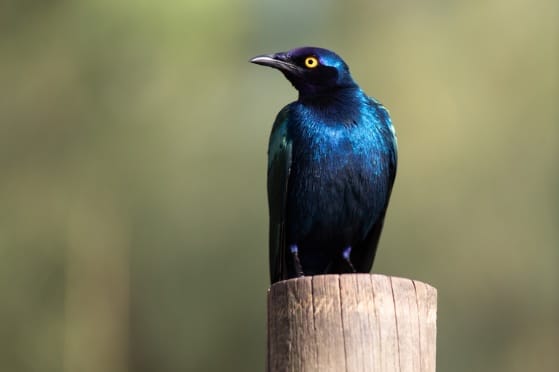
The outer layer of the feathers contains layers of platelets, and when light interacts with these layers, it undergoes a process known as interference. This process causes certain wavelengths of light to reinforce each other, resulting in the vibrant and shifting colors that we observe.
The iridescence serves multiple purposes in the bird’s life. It can be a key factor in mate selection, with the brightness and iridescence of the plumage often indicating the health and fitness of the individual.
Additionally, iridescence can play a role in communication, signaling dominance or submission during interactions within the species.
Apart from its shimmering exterior, the Cape Glossy Starling boasts a dark, robust bill and sharp, pointed wings.
The bird’s eyes are a striking yellow-orange, providing a vivid contrast to its dark plumage.
Its overall appearance is a testament to the intricate balance of evolutionary adaptations that have allowed this species to thrive in the diverse ecosystems of southern Africa.
Are there different types of Starlings?
Yes, there are numerous species of starlings, and they are part of the family Sturnidae. Starlings are known for their diverse and cosmopolitan distribution, with species found on almost every continent. Some of the well-known types of starlings include:
- European Starling bird (Sturnus vulgaris): Native to Europe, this species has been widely introduced to North America and other regions. Known for its iridescent plumage and adaptability to urban environments, European Starlings often form large flocks.
The term “common starling” is often used interchangeably with the European Starling, referring to the same species. - Cape Glossy Starling (Lamprotornis Nitens): Native to sub-Saharan Africa, the Cape Glossy Starling is characterized by its striking iridescent plumage. It is also known as the Red-shouldered Glossy-Starling and it is the species we are talking about in this article!
- Superb Starling (Lamprotornis superbus): Found in East Africa, the Superb Starling is known for its vibrant blue and orange plumage. It is a common sight in savannas and open woodlands.
- Asian Glossy Starling (Aplonis panayensis): Distributed across Southeast Asia and the Pacific, this species exhibits glossy black or greenish-blue plumage. Different subspecies may have variations in coloration.
- Purple Glossy Starling (Lamprotornis Purpureus): Native to West Africa, this species features deep purple and glossy blue plumage.
- Violet-backed Starling (Cinnyricinclus Leucogaster): Found in sub-Saharan Africa, the male of this species displays stunning violet and metallic blue hues on its back.
- Bank Myna (Acridotheres Ginginianus): Native to South Asia, Bank Mynas are often considered starlings. They have a glossy black plumage with yellow eye patches.
These are just a few examples, and the diversity of starlings extends to numerous other species distributed across different regions.
==> video: violet-backed Starling
Where do Cape Glossy Starling birds live and what is their habitat in sub-Saharan Africa?
These glossy starlings are commonly found in open woodlands, savannas, and grasslands, where their vibrant plumage contrasts vividly against the natural backdrop.
They thrive in areas with scattered trees, which provide both perches and potential nesting sites. The species is known to frequent regions with available water sources (we saw lots of them in Pongola Game Reserve), as these areas support a rich variety of insects and other small prey that constitute a significant part of their diet.
Countries within the southern and eastern parts of Africa host populations of the Cape Glossy Starling. Their range includes South Africa, Namibia, Botswana, Zimbabwe, Mozambique, and parts of Zambia. This distribution underscores the bird’s ability to adapt to various ecological niches within sub-Saharan Africa.
The African Cape Glossy Starling’s presence in these diverse habitats showcases the species’ resilience and capacity to navigate a range of environmental conditions.

African vs. European vs Asian Starlings: Distinguishing the Starlings
The Cape Glossy Starling (Lamprotornis Nitens) exhibits distinct characteristics that set it apart from other starling species, including the European Starling (Sturnus vulgaris) in Europe and the Asian Starling, which encompasses various species found across Asia. Here are some key differences:
| Characteristic | Cape Glossy Starling | European Starling bird | Asian Starling |
|---|---|---|---|
| Geographic Distribution | Sub-Saharan Africa | Europe, introduced to North America | Across Asia, diverse species in various countries |
| Plumage | Iridescent, vibrant colors | Dark, iridescent with metallic sheen | Varied, mix of dark and light colors, species-specific markings |
| Size and Shape | 28–30 cm, slender build | Slightly smaller, stockier build | Varied sizes and shapes among species |
| Behavior and Habitat | Open woodlands, savannas, grasslands, near water sources | Urban, suburban, agricultural areas | Varies, includes forests, grasslands, and urban areas |
| Vocalizations | Melodious with whistles and mimicry | Diverse, musical songs, mimicry | Varied, includes melodious songs and calls |
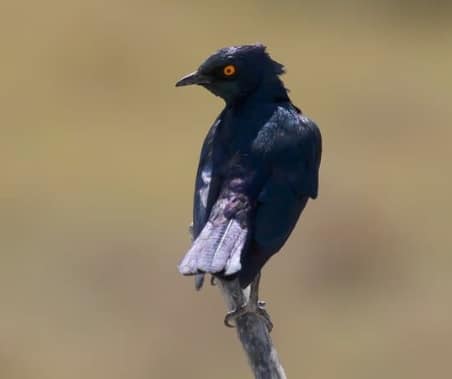
Life Cycle of the Starling: From Egg to Baby Starling
The nesting and breeding habits of the Cape Glossy Starling offer a fascinating glimpse into the life cycle of this avian species. Here’s an overview:
Nesting:
- Location: Cape Glossy Starlings are cavity nesters, meaning they often seek out tree hollows or other protected spaces for nesting.
- Construction: The female typically takes charge of building the nest using various materials such as twigs, grass, feathers, and leaves. The interior is lined with softer materials for added comfort.
Breeding:
- Breeding Season: The Cape Glossy Starling’s breeding season is influenced by factors such as food availability and environmental conditions. Breeding often occurs during the rainy season when food resources are more abundant.
- Courtship: Courtship involves elaborate displays by both males and females, showcasing their vibrant plumage and engaging in synchronized movements. These displays play a role in pair bonding.
Eggs and Incubation:
- Eggs: Clutches typically consist of 2 to 4 eggs, and the female is primarily responsible for incubating them.
- Incubation Period: The incubation period lasts around 14 to 16 days, during which the female diligently tends to the eggs, ensuring optimal conditions for hatching.
Parental Care:
- Feeding: Both parents contribute to feeding the hatchlings. Their diet primarily consists of insects and other small invertebrates.
- Growth Milestones: The chicks are altricial, meaning they are born relatively immobile and with closed eyes. As they grow, their parents provide constant care, delivering food to the nest.
- Fledging: The fledging period, when the young birds develop flight feathers and leave the nest, typically occurs around 21 to 28 days after hatching.
Post-Fledging:
- Independence: After fledging, the young starlings continue to be dependent on their parents for a brief period, learning essential survival skills.
- Dispersal: As they gain independence, the juvenile starlings gradually disperse from the nesting area, seeking their own territories.
From the meticulous construction of nests to the cooperative efforts in feeding and nurturing, the species exemplifies the wonders of avian parenting and the natural progression of life in the avian world.
Cape Glossy Starlings’ Diets: Delving into Their Dining Habits and impact on the environment.
The Cape Glossy Starling, with its adaptability to diverse habitats in sub-Saharan Africa, has a varied diet that plays a crucial role in local ecosystems. Here’s a glimpse into their typical meal contents and the impact of their dietary patterns on the environment:
Typical Meal Contents:
- Insects and Invertebrates: The primary component of the Cape Glossy Starling’s diet consists of insects and small invertebrates. Beetles, grasshoppers, caterpillars, and spiders are among the many arthropods they consume.
- Fruits and Berries: In addition to their reliance on animal matter, Cape Glossy Starlings supplement their diet with fruits and berries.
- Seeds and Nectar: Some individuals may incorporate seeds and nectar into their diet, depending on local food availability. This adaptability allows them to thrive in different environments.
Impact on the Local Environment:
- Insect Control: The Cape Glossy Starling’s penchant for insects makes them valuable contributors to pest control. By preying on insects that may otherwise harm crops or vegetation, they help maintain a balanced ecosystem.
- Seed Dispersal: As fruit and berry consumers, these starlings unintentionally aid in seed dispersal. By eating fruits and later excreting the seeds in different locations, they contribute to the regeneration of plant species, supporting biodiversity.
- Maintaining Ecosystem Balance: The Cape Glossy Starling’s dietary diversity plays a role in the overall health and balance of local ecosystems. Their foraging behavior affects the population dynamics of both prey and plant species, preventing any one species from dominating and disrupting the ecosystem.
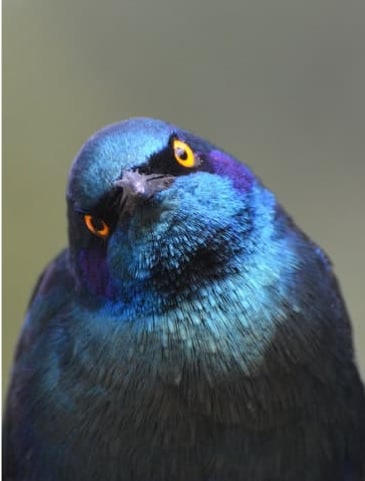
While the Cape Glossy Starling’s feeding habits contribute positively to the environment, it’s essential to recognize that disruptions in their habitats, such as deforestation or changes in agricultural practices, can impact their ability to find suitable food sources.
The Spectacle of Synchronization: Exploring the Murmuration of Starlings
What is Murmuration?
A murmuration refers to the phenomenon where a large group of birds, often our starlings, move and fly together in a coordinated manner, creating intricate and fluid patterns in the sky. The term is commonly used to describe the synchronized aerial displays that can involve thousands or even tens of thousands of birds.
Occurrence within Starling Species:
Murmurations are particularly associated with starlings, including the Cape Glossy Starling. The reasons behind murmurations are complex and may include predator avoidance, increased foraging efficiency, and social bonding.
Contribution to Survival and Social Structure:
- Predator Avoidance: One primary function of murmurations is thought to be predator avoidance. The collective movements and unpredictable patterns can confuse and deter predators, making it difficult for them to target a single individual within the flock.
- Foraging Efficiency: Murmurations may also enhance foraging efficiency. As a group, starlings can locate and exploit food sources more effectively, sharing information about the availability of resources within the flock.
- Social Bonding: Participating in murmurations fosters social cohesion among individuals within the flock. It strengthens the social bonds between birds and may play a role in mate selection and overall group dynamics.
==> video of Starling Murmurations, isn’t this sensational?
Conserving Status: Protecting the Cape Glossy Starling
The Cape Glossy Starling (Lamprotornis Nitens) is classified as “Least Concern” on the International Union for Conservation of Nature (IUCN) Red List, which indicates that the species is not currently facing a high risk of extinction.
The “Least Concern” designation suggests that the population is stable, and there are no immediate threats that would warrant a higher level of concern.
While this is positive news, it’s important to note that conservation statuses can change over time due to various factors such as habitat loss, climate change, and other environmental pressures. Continued monitoring and conservation efforts are essential to ensure the long-term well-being of any species, even those currently considered to be at lower risk.
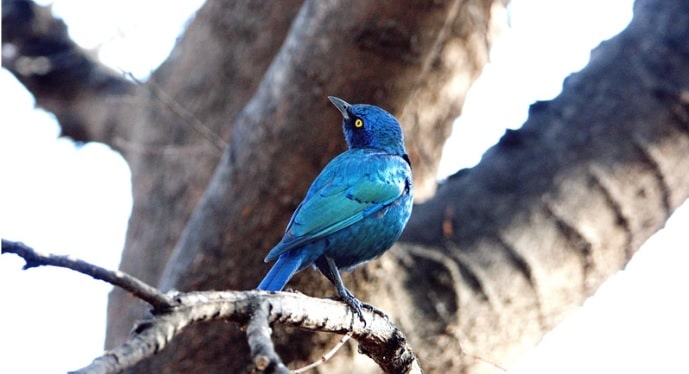
Want to find the best binoculars for a safari? Check out my blog post here!
My Final Conclusion.
I hope that you enjoyed this article on the African Cape Glossy Starling, and if you have any more questions about this bird species, please leave them down below in the comment section.
You can also join my social media channels below to look at more pictures, videos and stories about my travels to Africa, welcome!
I wish you happy travels and birdwatching!
Kind regards,
Lizzy
I now have a YouTube channel as well!
YouTube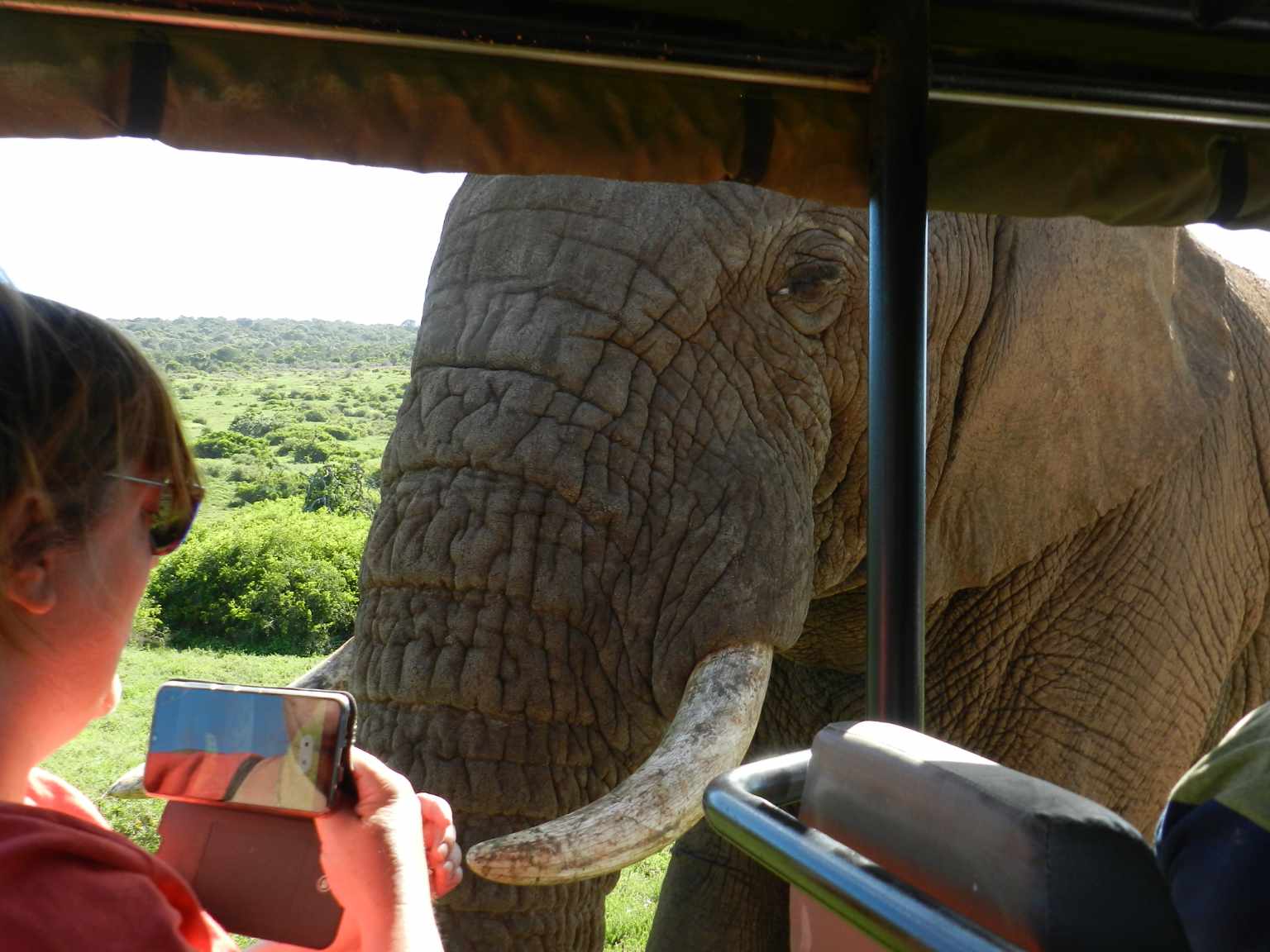
Hello Africa travellers!
Who am I? Well, the least you can say is that I am quite crazy about Africa, its nature, its climate, its culture, and more.
As a young woman in my twenties, I had already traveled to several African countries by traveling along in an overlander on my own and mostly camping ( or glamping ) and just fell in love with the diversity of it all.
So much, so that at the age of 26, I went back to university to study biology, which, unfortunately, I couldn’t finish because of health reasons (yes, I got sick from a tropical disease, oh cynicism). But this did not stop my dream of traveling back to Africa several times, and I still do.
My dream was back then to leave Europe and go study animal behavior, especially the elephants (sure, that’s every girl’s dream haha), but I am also very much intrigued by hyenas and other “ugly African animals“.
So, I “kind of” have a little bit of a scientific approach to my articles, when I write about African birds, for example. And most of all: the passion.
But life goes on, you move from one side of the country to the other, you get sick again and top it off with lower back problems, and before you know it, you are over 50 hahaha!
Now, I still travel to Africa, but take it a bit “easier” than the good old camping days, and stay in comfortable, yet affordable accommodations, together with my husband Wouter.
These are some of the countries I have traveled to: Kenya, Tanzania, Zanzibar, Malawi, Zambia, Zimbabwe, South Africa, Namibia, Botswana, Tunisia, and a little bit of Lesotho LOL .
While clearly not being African territory, but Spanish, I also visited Gran Canaria and Tenerife, and location-wise, I consider them “African”, because of their climate and nature, sue me :-p
The last trip I took was to South Africa in the year 2023, and it sure got the fevers for Africa back! From the Barberton mountains to the Drakensberg and the Southcoast, one month wasn’t enough at all to see the whole country, so we’ll be back! At ease and with a little bit more luxury than in my younger days haha!
I wish you happy travels!
Kind regards
Lizzy

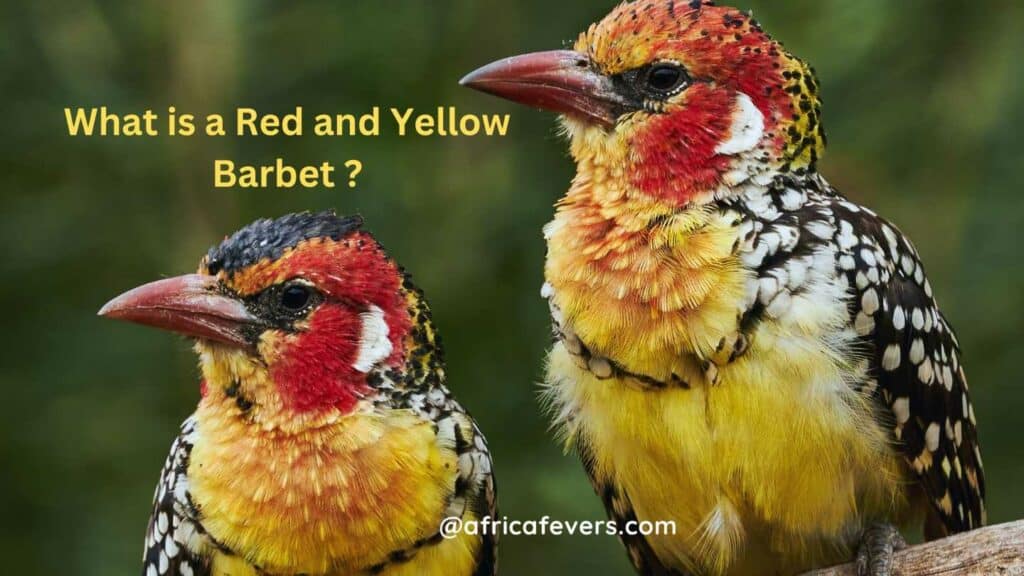
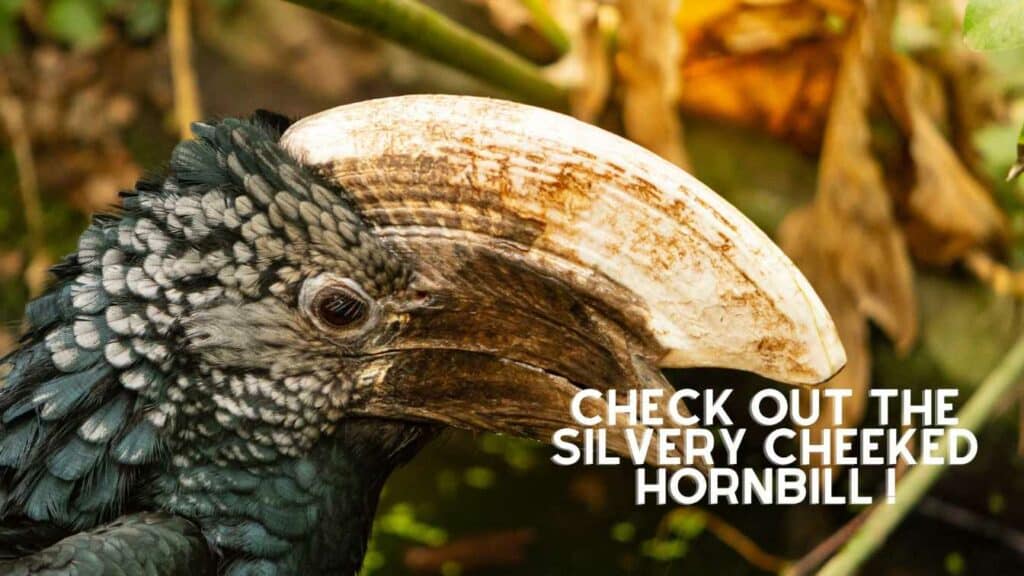
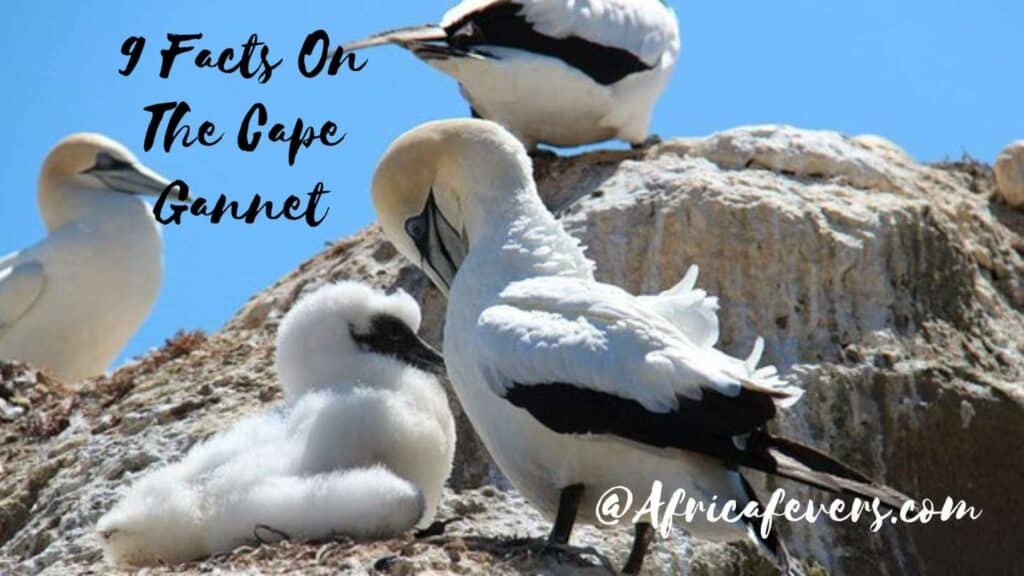
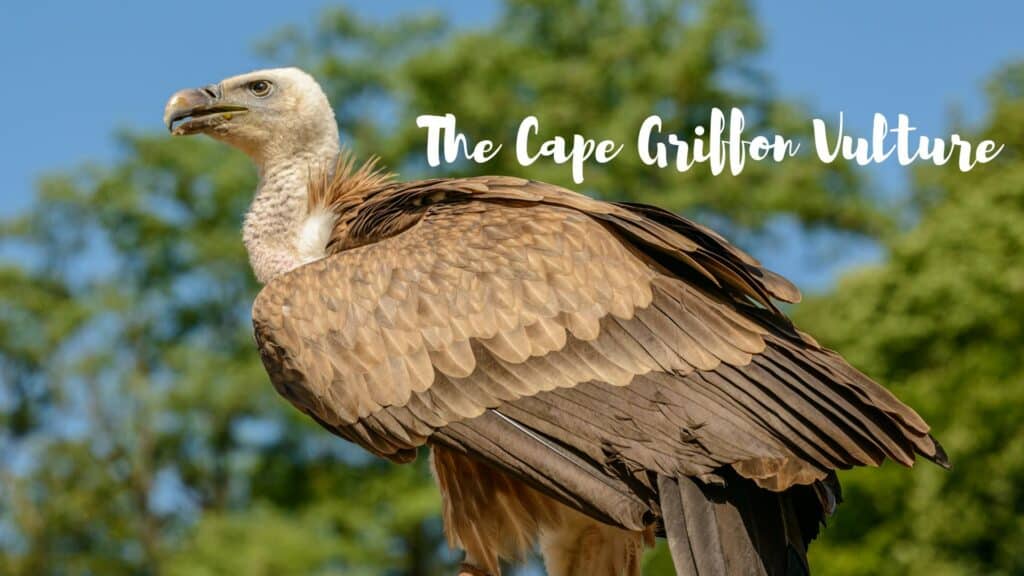
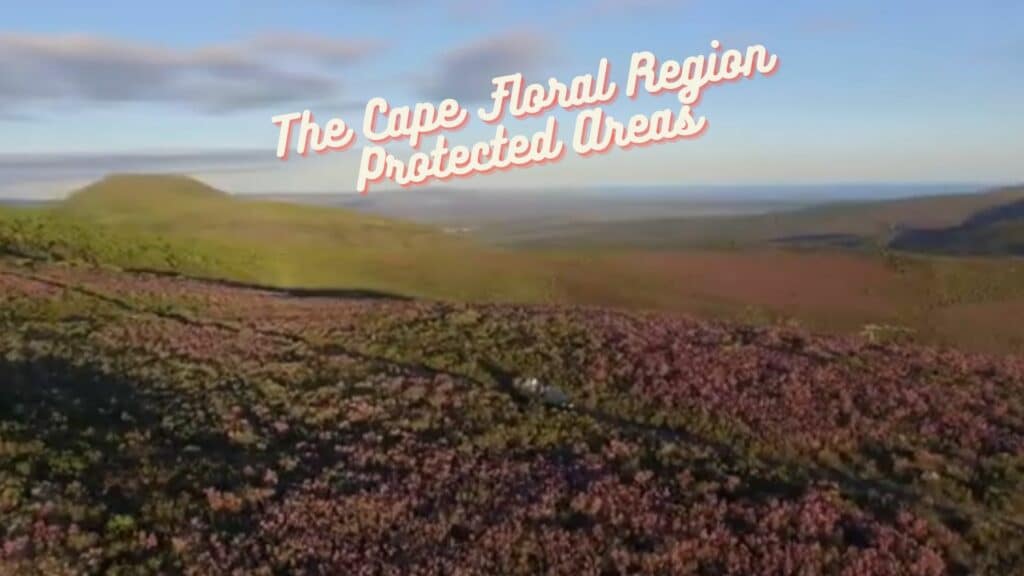
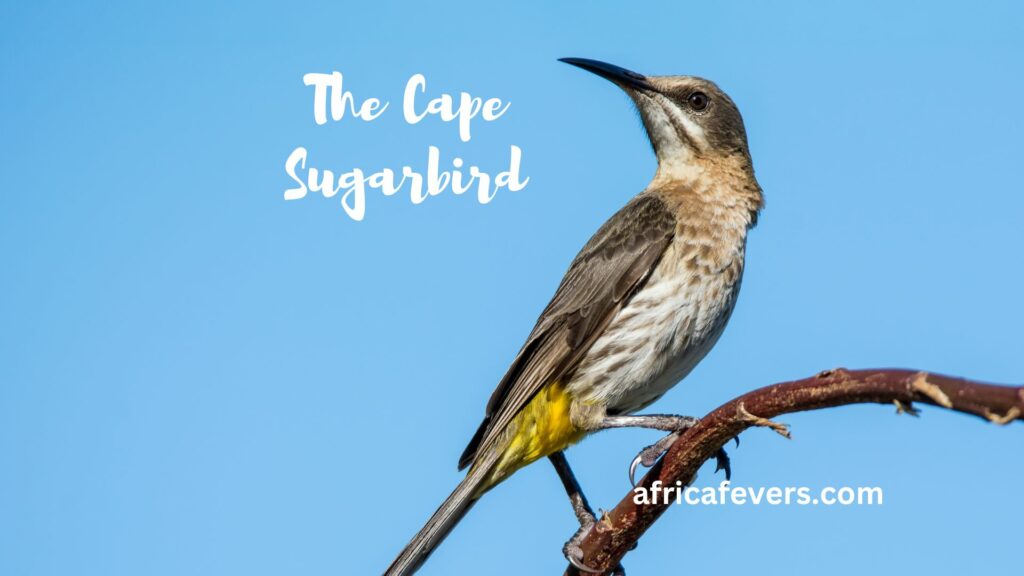

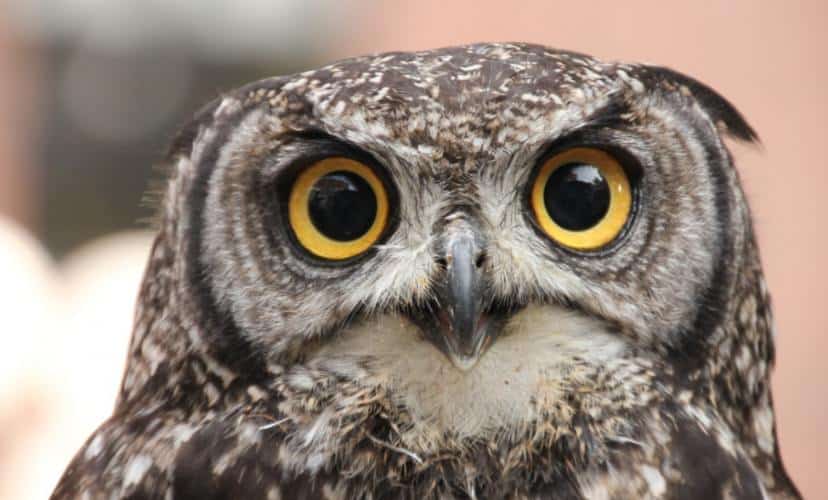
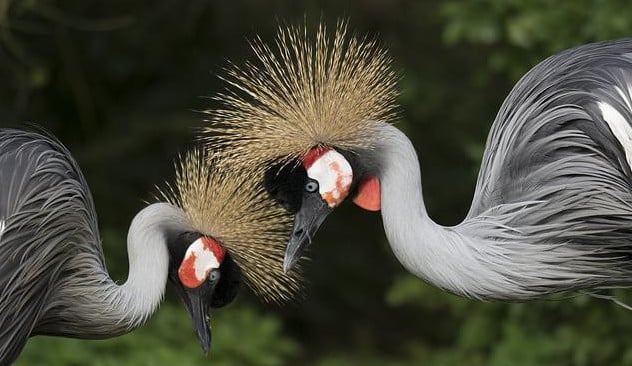

Hi, I have just finished reading this article and I have to say the level of detail and research that has gone into this is outstanding!! I have never been to Africa myself, so reading this I have definitely learned something new today. I do like birds and these look so shiny and colourful, and your explanation for that was very informative. Thank you for sharing this and I look forward to learning more about Africa from your posts.
hello Ryan!
Thank you for your uplifting comment and I wish you happy holidays! (maybe to Africa next year? 😉 )
Lizzy
Fascinating article – not sure I had heard of Glossy Starlings until I read your post. They are definitely shiny birds, so I see why they call them “glossy”. You really got thorough into their nesting, parental, and feeding habits, as well as their contributions to the ecosystem. I also learned a new term “Murmuration” – didn’t know that’s what it was called when birds coordinate their flying in large flocks.
hello Ben!
Thank you for your positive comment and I wish you happy birdwatching!
Lizzy